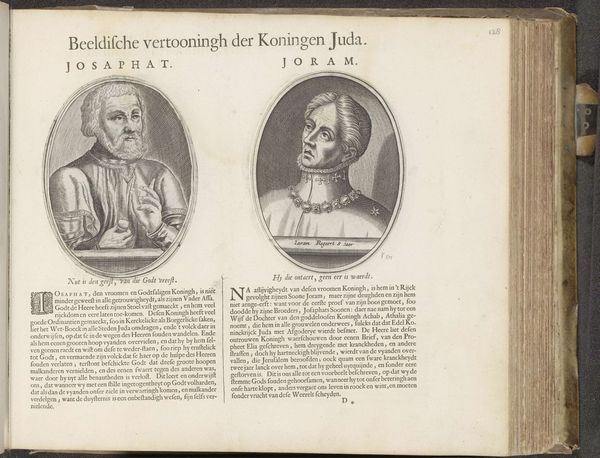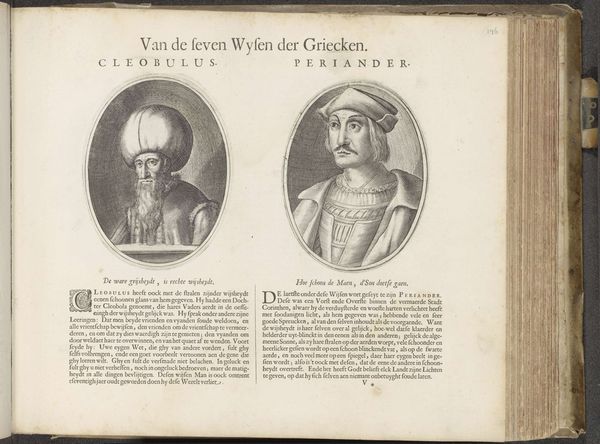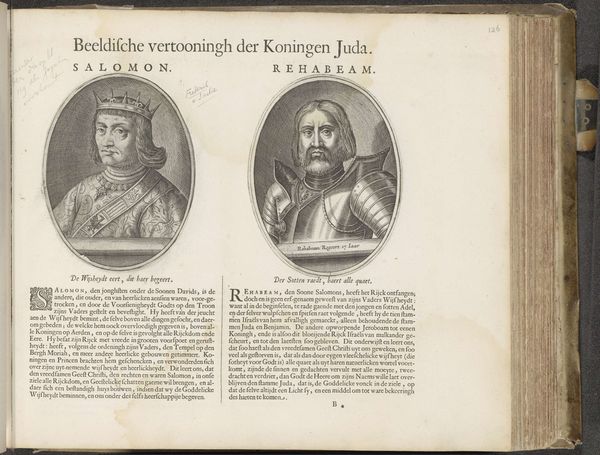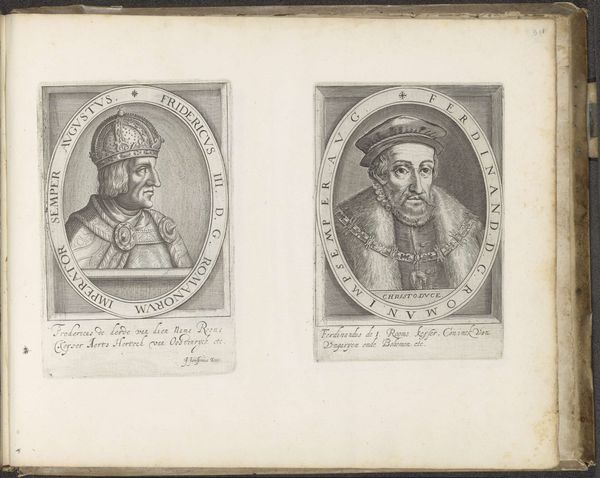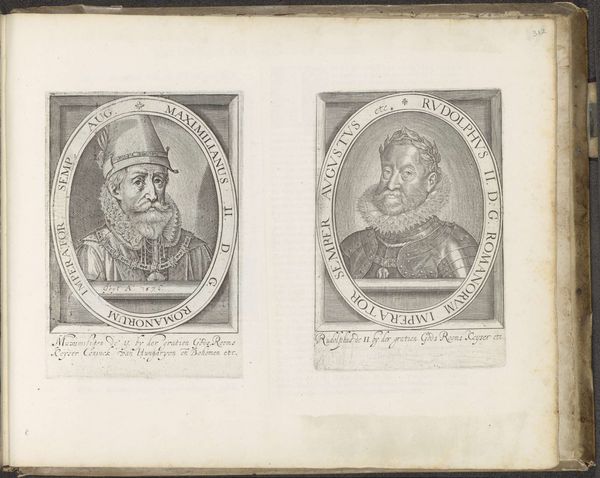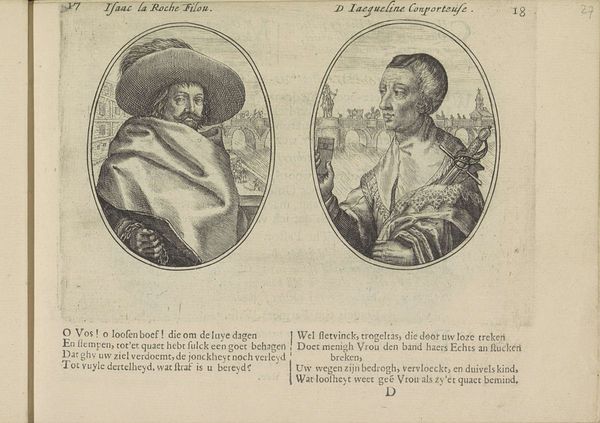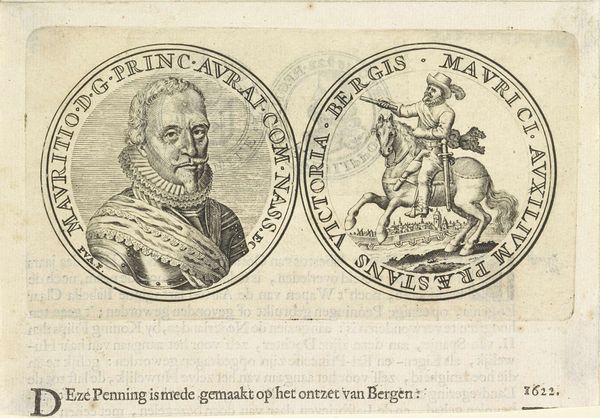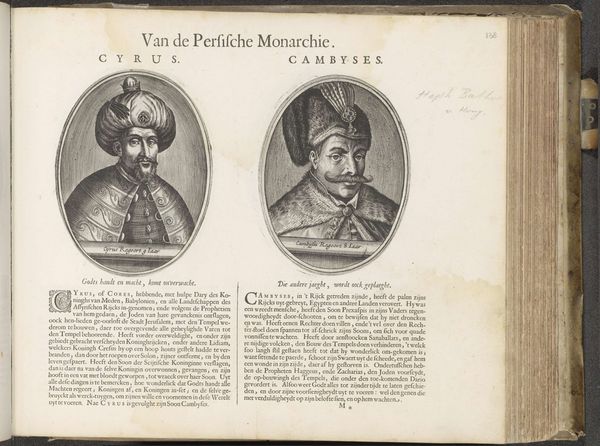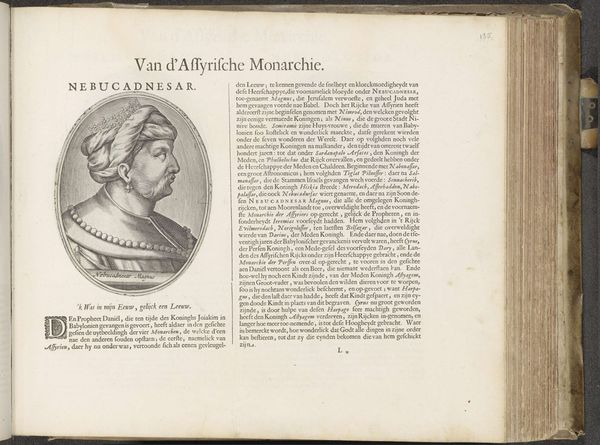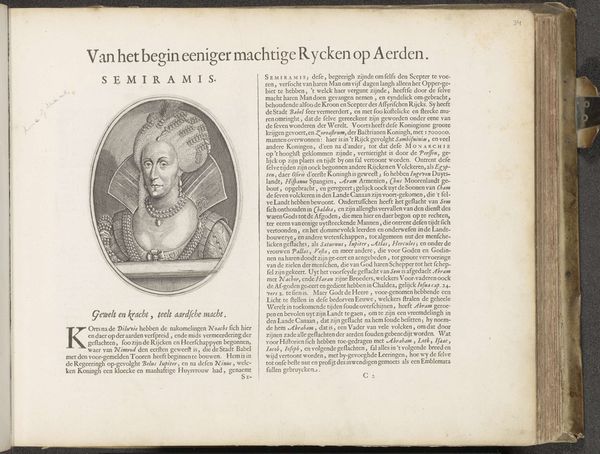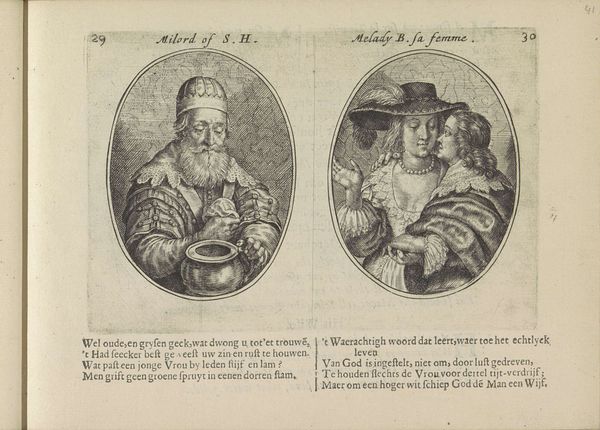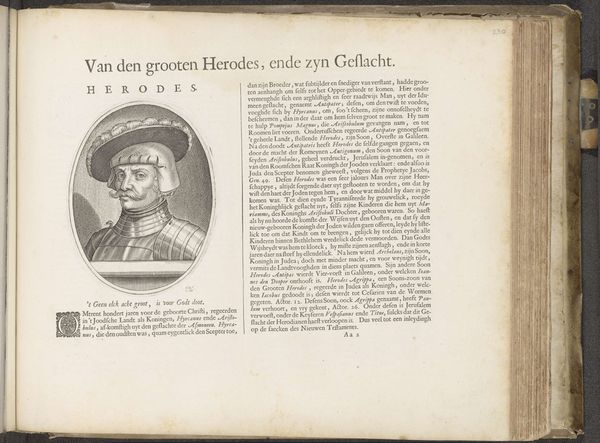
print, engraving
#
portrait
#
baroque
# print
#
coloured pencil
#
history-painting
#
engraving
Dimensions: height 134 mm, width 101 mm, height 135 mm, width 103 mm, height 294 mm, width 370 mm
Copyright: Rijks Museum: Open Domain
Curator: Here at the Rijksmuseum, we have "Portraits of the Judges Jair and Jephthah." Attributed to an anonymous artist, the print probably dates from somewhere between 1610 and 1654. What strikes you about it? Editor: The immediate impression is one of rather severe gentlemen. They’re framed in these ovals, almost like cameos. But despite the small scale, the detail is incredible, especially in the rendering of their clothing. There’s such a stark contrast between them – one looks like a scholar, the other a soldier. Curator: Precisely. This engraving is teeming with minute details, isn’t it? Notice how each man is individually framed within an oval cartouche. Jair, to the left, is presented in civilian attire, whereas Jephthah, on the right, sports a full suit of armor. This wasn't simply a fashion statement of the time. Editor: So, it's making deliberate choices to distinguish their roles. Is this a common depiction of judges, reflecting perhaps societal expectations? Curator: Exactly! This engraving offers insight into how leaders were viewed and represented during this period. The choice of clothing and the presentation likely emphasized specific qualities associated with leadership, judgment, and social status. There are details of course lost to us—perhaps a contemporary viewer would instantly see markers of class, office, trade that we just wouldn’t notice. Editor: It is really captivating how these portraits, despite being relatively small and monochrome, really suggest such different temperaments. You have Jephthah, with his determined gaze and formidable armor versus Jair, who sports a gentler, contemplative air, with the scholarly robes and soft hat. The engraving captures such texture with only black ink, suggesting silk, metal, even the soft hair of their beards. Curator: It almost transcends the function of simply documentation; there is real nuance, wouldn't you say? A level of character portrayal one might not expect from such a historical artifact. I also wonder if the book in which this print was bound told their history. It would bring so much more insight to these visual elements! Editor: Definitely. And even divorced from the original text, we can still get a sense of the era, the weight of history, and the individual stories these portraits hint at. Curator: A poignant snapshot into another time.
Comments
No comments
Be the first to comment and join the conversation on the ultimate creative platform.
